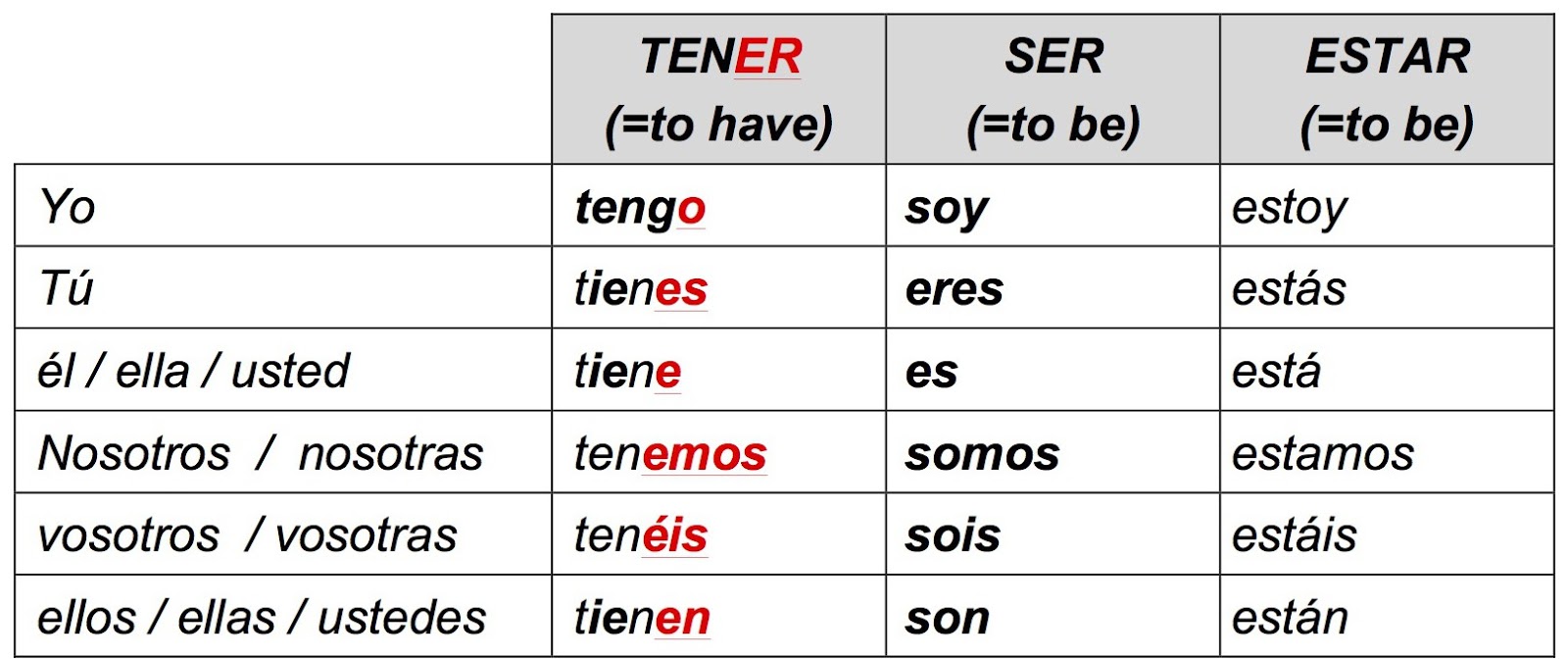Ser And Tener Chart
Ser And Tener Chart - Ser is a copular verb which is often translated as to be, and tener is a transitive verb which is often translated as to have. Learn how to use ser, estar, and tener to express different meanings of to be in spanish. Ser and estar are both spanish verbs that mean 'to be', but they are used in different contexts. Sign up now to access spanish grammar: Estar describes temporary conditions or states, locations, and actions happening at the. Learn the irregular conjugations and examples of ser (to be), estar (to be), and tener (to have) in the present tense. Learn all about the spanish verbs haber, tener, estar, and ser!
Sign up now to access spanish grammar: Learn how to use ser, estar, and tener to express different meanings of to be in spanish. Check out this grammar guide with spanish examples and a practice quiz! Ser is used for qualities and characteristics, in the passive voice and in connection with adverbs of time.
I'll show you how to remember every 'tener' conjugation with a full tense guide and conjugation chart for each tense, with example sentences. Make sure to use the right verb: Ser is used for permanent or defining qualities, such as identity, origin, and. Ser and estar may be the most confusing verbs for spanish students, both mean “to be”, and it's hard to know which one to use if you're not familiar with the rules. Sign up now to access spanish grammar: Unfortunately, with irregular verbs like tener, you will need to learn the conjugation by heart, as otherwise, it will be hard for you to use the correct form.
Ser and estar may be the most confusing verbs for spanish students, both mean “to be”, and it's hard to know which one to use if you're not familiar with the rules. Fortunately for you, however, we have. Study with quizlet and memorize flashcards containing terms like ser: Write the correct sentences in spanish! Make sure to use the right verb:
Write the correct sentences in spanish! I'll show you how to remember every 'tener' conjugation with a full tense guide and conjugation chart for each tense, with example sentences. Learn all about the spanish verbs haber, tener, estar, and ser! Study with quizlet and memorize flashcards containing terms like ser:
Make Sure To Use The Right Verb:
I'll show you how to remember every 'tener' conjugation with a full tense guide and conjugation chart for each tense, with example sentences. Ser is used for qualities and characteristics, in the passive voice and in connection with adverbs of time. Estar describes temporary conditions or states, locations, and actions happening at the. See examples, conjugations, and rules of usage for each verb.
Unfortunately, With Irregular Verbs Like Tener, You Will Need To Learn The Conjugation By Heart, As Otherwise, It Will Be Hard For You To Use The Correct Form.
Ser is used for permanent or defining qualities, such as identity, origin, and. Learn the irregular conjugations and examples of ser (to be), estar (to be), and tener (to have) in the present tense. Learn more about the difference between ser and tener below. Also, find out how to use tener expressions with ser or estar.
Learn How To Use Ser, Estar, And Tener To Express Different Meanings Of To Be In Spanish.
Ser is a copular verb which is often translated as to be, and tener is a transitive verb which is often translated as to have. Fortunately for you, however, we have. Study with quizlet and memorize flashcards containing terms like ser: Ser is used to express what.
Learn All About The Spanish Verbs Haber, Tener, Estar, And Ser!
Check out this grammar guide with spanish examples and a practice quiz! Write the correct sentences in spanish! If you’re unsure which verb to use, you can always. Ser and estar are both spanish verbs that mean 'to be', but they are used in different contexts.
Ser and estar may be the most confusing verbs for spanish students, both mean “to be”, and it's hard to know which one to use if you're not familiar with the rules. Fortunately for you, however, we have. Estar describes temporary conditions or states, locations, and actions happening at the. Ser is a copular verb which is often translated as to be, and tener is a transitive verb which is often translated as to have. Make sure to use the right verb:







